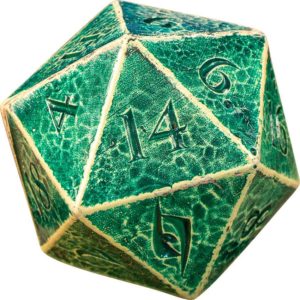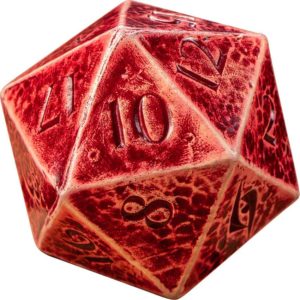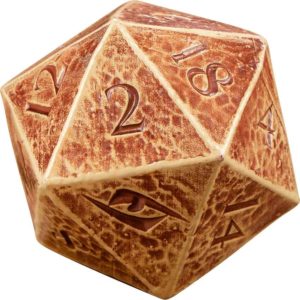Getting Started: A Beginner’s Guide to D&D
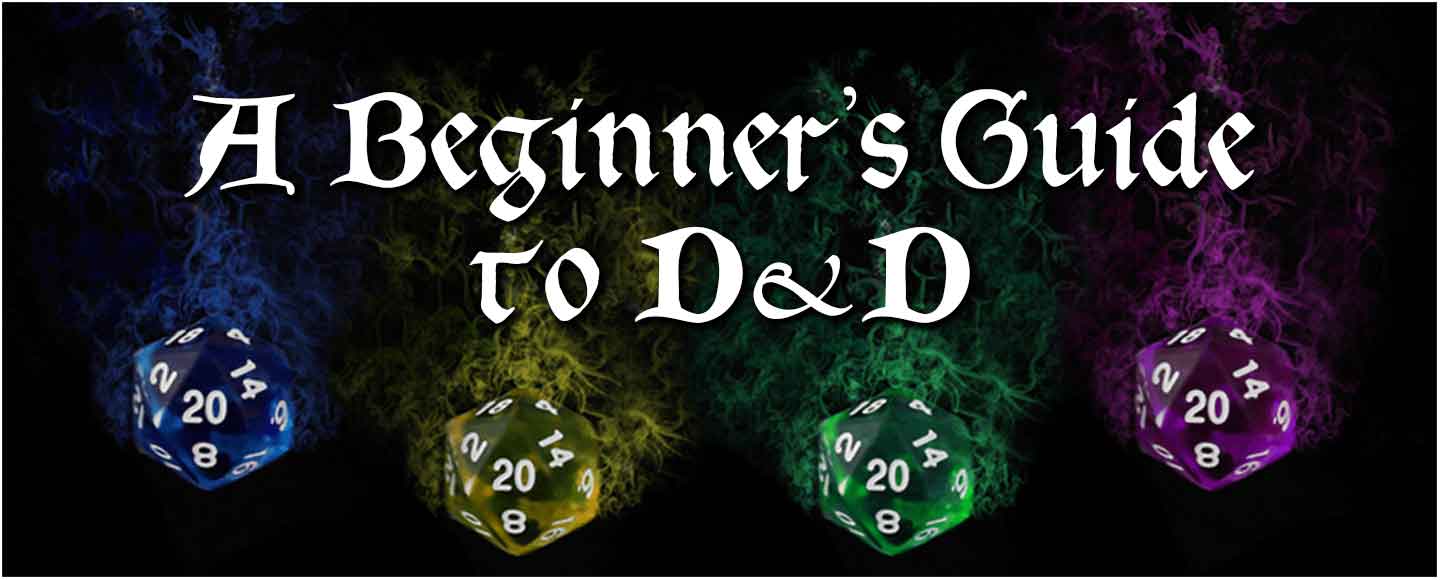
Dungeons & Dragons is a popular roleplaying game all over the nation. Let’s look at things you need to know when getting started with a beginner’s guide to D&D.
What Is Dungeons & Dragons?
Dungeons & Dragons is a fantasy tabletop role-playing game originally designed by Gary Gygax and Dave Arneson. It was first published in 1974 by Tactical Studies Rules, Inc. It was since published by Wizards of the Coast in 1997. Originally derived from miniature wargames, a variation of the 1971 game Chainmail served as the initial rule system. However, D&D departs from traditional wargaming by allowing each player to create their own character to play instead of a military formation.
The goal is for the characters to embark on imaginary adventures in a fantasy realm. They form a party and interact with the realm’s inhabitants and each other. They resolve issues, engaging in battles, exploring the world, and gathering treasure and knowledge from everything and everyone around them. Through this process, the characters earn experience points (XP) to level up. They continue to gain powers and strength over several gaming sessions.
How to Play
D&D is normally played indoors with the participants seated around a tabletop. However, nowadays many people also use online resources like Discord, Roll20, and D&D Beyond to play together across great distances.
One player takes on the role of Dungeon Master (DM). The others each control a single character, representing an individual in a fictional setting. This group of individuals, when working together, is described as a “party” of adventurers. Each character often has their own area of specialty which contributes to the success of the whole group. Throughout the game, each player directs the actions of their character. They choose how to interact with other characters in the game. This is performed through verbal impersonation of the characters by the players, also known as role-playing. Many players also use miniature figures on a grid map as a visual aid, particularly for combat.
What Do You Need to Play?
If playing D&D in the general tabletop setting, players will need the following:
- A character sheet – To keep track of their stats, weapons, abilities, and their character’s background information.
- A rule book – Players can check out the Dungeons and Dragons: 5th Edition Rule Book. The official Dungeons and Dragons website also provides a free PDF version of the Basic Rules. It’s their version of a beginner’s guide to D&D.
- One set of polyhedral dice – A set of these dice typically comes with 7 different dice. These include d4, d6, d8, d10, d12, d20, and d100. The “d” refers to the die itself, while the number refers to the number of sides on the die. This excludes the d100 as it has 10 sides. It is generally used as a percentile die by the DM rather than the players. Different polyhedral dice coincide with different actions. A d20 is used to see whether a hit was made in combat. However, a d8 is used to determine how much damage was dealt.
- A pen or pencil – To keep track of their character’s information, and any important notes from the story line.
Equipment for playing will be a little bit different if using online resources for gameplay. Sites like Roll20 and D&D Beyond allow players to have virtual character sheets, so there’s no reason to use pen and paper. If playing online, some DMs would rather their players use virtual dice as well to maintain honest gameplay. However, others may be lenient and allow players to roll their own physical dice. It’s still a good idea to have a copy of the rules on hand, whether physical or virtual.

Top Row, Left to Right: d100, d10, d12, d20
Bottom Row, Left to Right: d4, d6, d8
Joining a Campaign or a One-Shot
Some D&D groups prefer short one-shots, while others prefer much longer campaigns. Most groups play a combination of both. A one-shot is a single run adventure. These sessions are usually unconnected from a storyline or game world and can be finished in only a few hours. There is no connected plot, and the players can play different characters in each session. A campaign is a series of adventures that take place over multiple sessions. The player’s characters often remain as elements of the continuing story arc unless they meet an unfortunate demise. The DM can either use one of the many pre-made adventures that have been published throughout the history of D&D, or they can design their own original adventure. These are typically referred to as a homebrew.
Should I Be a DM or a PC?
The Dungeon Master (DM) is the storyteller and host of the campaign or one-shot. They act as every NPC or BBEG that the party will encounter on their adventure. NPC stands for non-player character. BBEG stands for Big Bad Evil Guy. Their job is to set the scene for the party. They describe what other players perceive in this imaginary world, and how their actions affect the world around them. Typically, the Dungeon Master is someone who has a bit more experience playing D&D than the rest of the players, but don’t let that discourage you from giving it a try.
Player Characters (PCs) are the members who make up the party. Their job is to explore the imaginary world, traverse into dungeons and forests, and unravel the stories around them. They make the decisions that will drive the story along, whether it be good or bad. Anyone can be a player character, no matter if they are new to the game or well-versed.
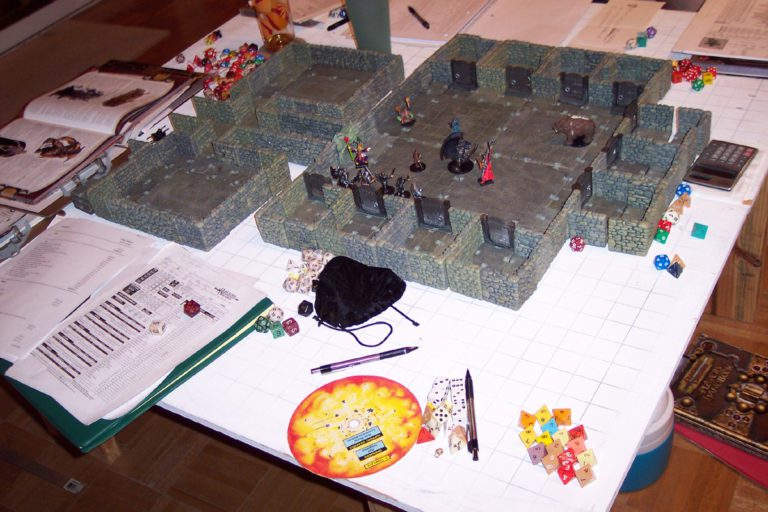
Character Creation
Players record the details of their character on a Character Sheet. A player will determine their character’s ability scores by rolling a d20 for each ability. Afterwards players decide on a race for their character and their character’s class or occupation. They choose an alignment of morality and many other features to round out a character’s abilities and background. Some races give characters different advantages, like dark-vision, hereditary spells, or speaking other languages. Classes add to what characters can do on all fronts; stat improvements, proficiency in weapons or languages, or whether a character is able to use spells. For example, a cleric is well-versed in magic that comes from an in-game deity. A monk is more proficient in unarmed combat and can harness ki’s mystic energy. These two character’s would have very different abilities.
The difficult part of character creation is usually coming up with a detailed background. Creating a background for a character allows the other party members to get to know the character better. It also helps the DM to weave a character’s story into the narrative more thoroughly. Most players will go into an adventurer without knowing a lot of the backstory, if any at all. Depending on what kind of character the player created, the background could cause a character to act a certain way. This could be around friendly NPC’s or foes, which in turn affects the rest of the party. For tips on creating your first D&D backstory, check out Crispy’s Tavern’s guide on Youtube, 6 Tips for Your First D&D Backstory – Tabletop Tavern Tips.
Abilities and Proficiencies
A character’s abilities include strength, dexterity, constitution, intelligence, wisdom, and charisma. The stats for these abilities are initially rolled during character creation. Each ability score will determine an ability modifier which characters can apply when rolling an ability check. Let’s say a player rolls a d20 for an ability score. If they were to get a 14 or 15, their ability modifier would be +2. Proficiency bonuses are also determined by character creation. However, these depend on race or class and are only applied when rolling for specific skill checks.
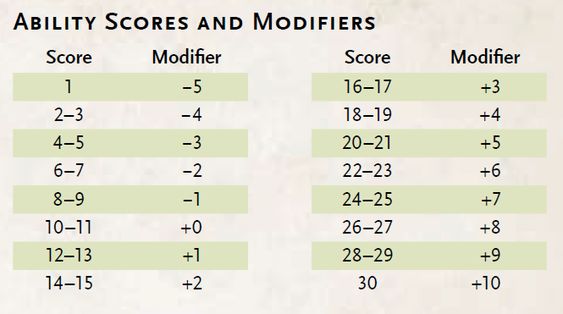
Role-Playing My Character
Once the characters are made and the first session is decided, it’s time to prepare to become the character. Depending on the background and character, different players will roleplay in different ways. A Lawful Good Wizard and a Chaotic Evil Paladin would not act the same. And if one was an elf and one was a paladin, they would have different accents. But getting into character can be hard for a first-time player. Keeping the same accent for an entire campaign can be difficult. Some people recommend recording the character’s “voice” to listen to before the session to get into character. For other tips on role-playing in D&D, check out Crispy’s Taverns guide on Youtube, How to Start Roleplaying in D&D (Making RP Easier) – Tabletop Tavern Tips.
Actions and Combat In-Game
Depending on what actions a character takes, they will have to make a roll to see how their action prevails. Certain actions a character chooses to do are automatically successful. This could be picking ale up at the tavern or opening an unlocked door. Other actions, liking attacking an opponent or picking a lock, must be discussed with the DM. The player will then roll a dice to see if it is successful or not. This is where ability modifiers and proficiencies come into play. Before combat the DM will ask the player to roll initiative, which is a d20 plus your dexterity modifier. Initiative is how players decide what order the characters will go in during combat.
Let’s say during combat, an opponent has an Armour Class (AC) of 17. The player rolls a 15 on a Strength attack. They will have to add their ability modifier to their roll to successfully hit the opponent. After a successful hit, the player will roll for damage. The dice they roll for damage depends on the weapon they use to attack. For example, a quarterstaff causes a d6 of bludgeoning damage.
In this article, we looked at the things you need to know when getting started with a beginner’s guide to D&D. We explored how to play, the tools needed for play, character creation and other important topics when deciding to join a session of Dungeons & Dragons.


